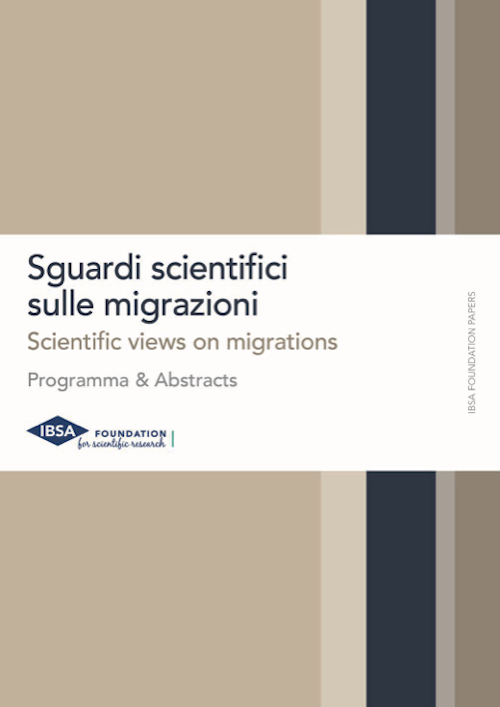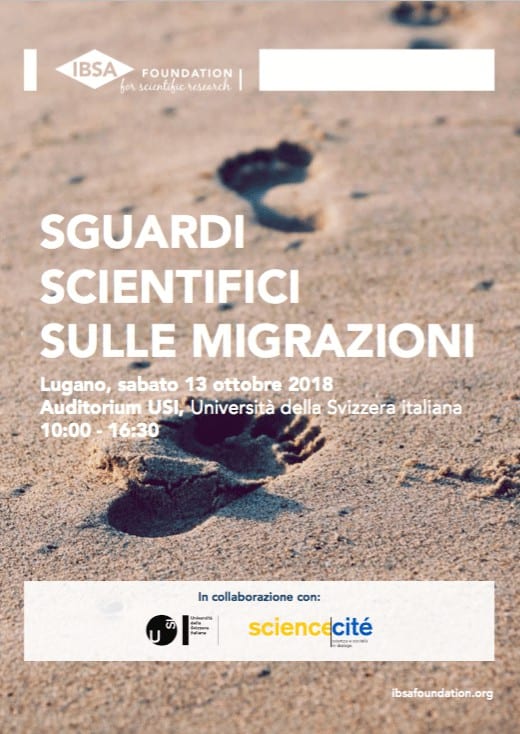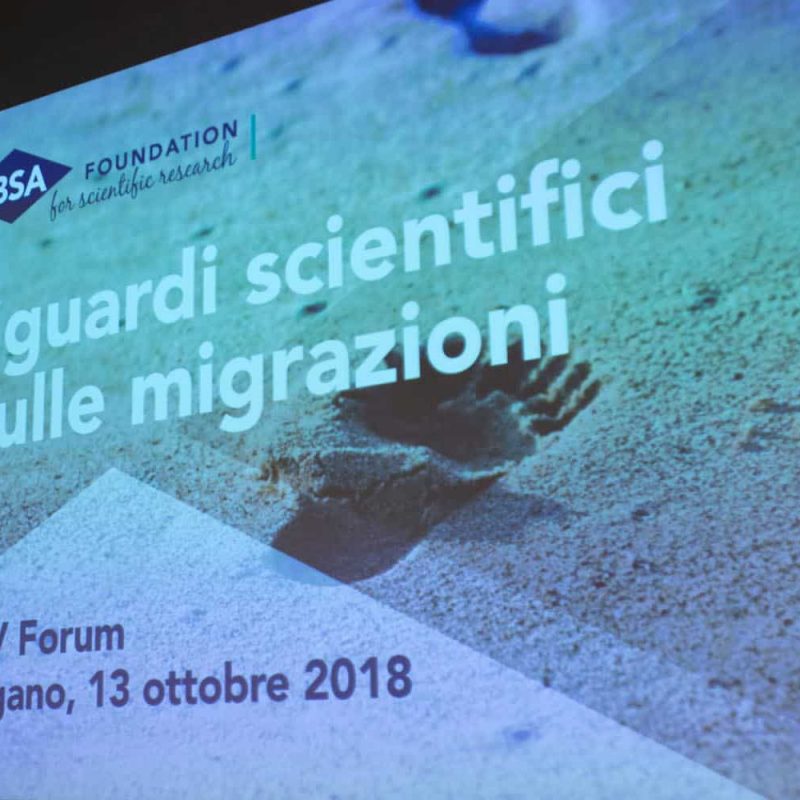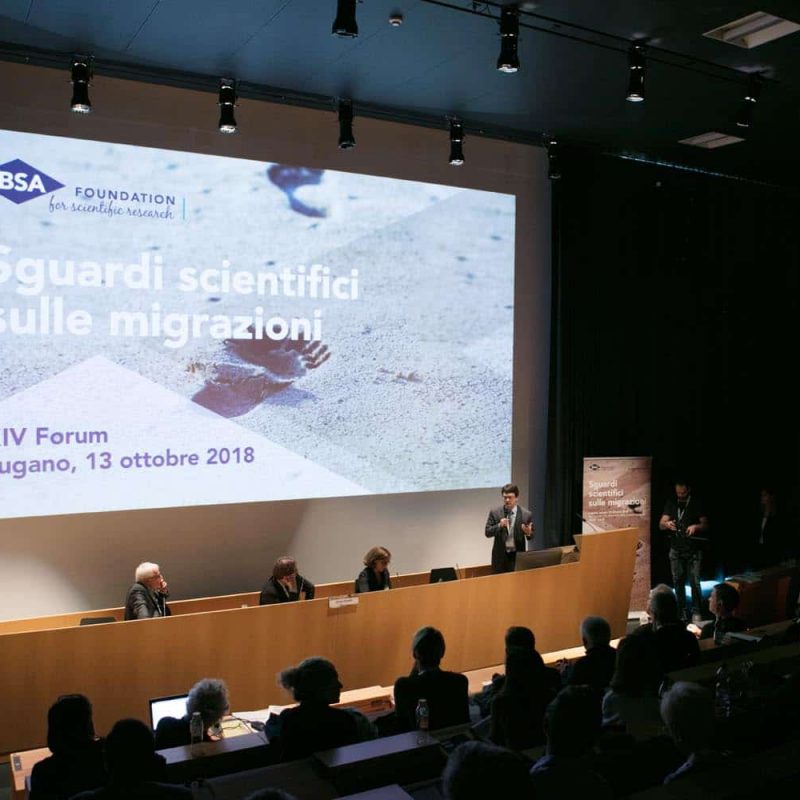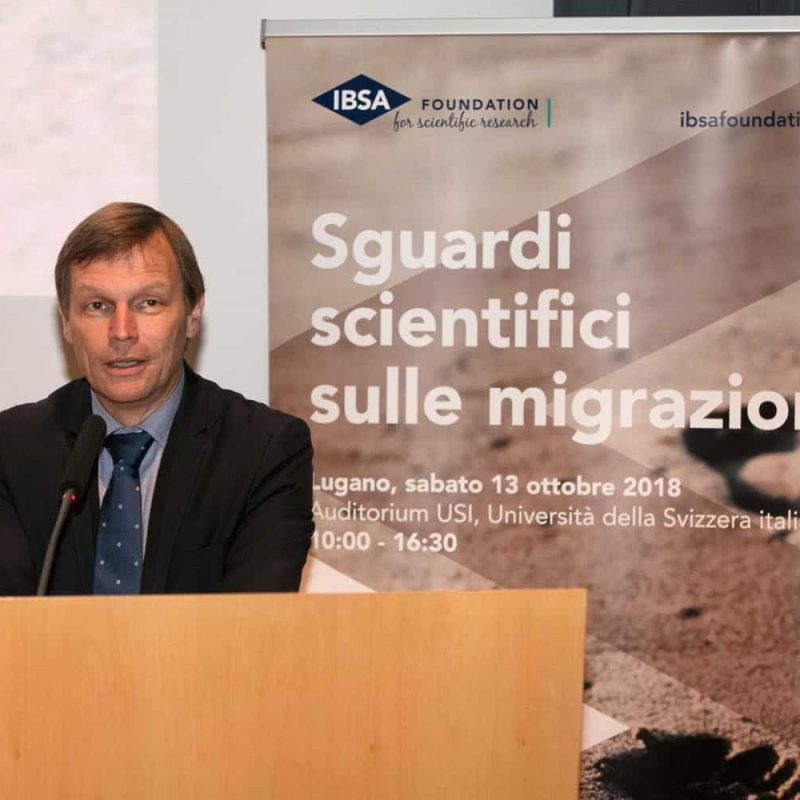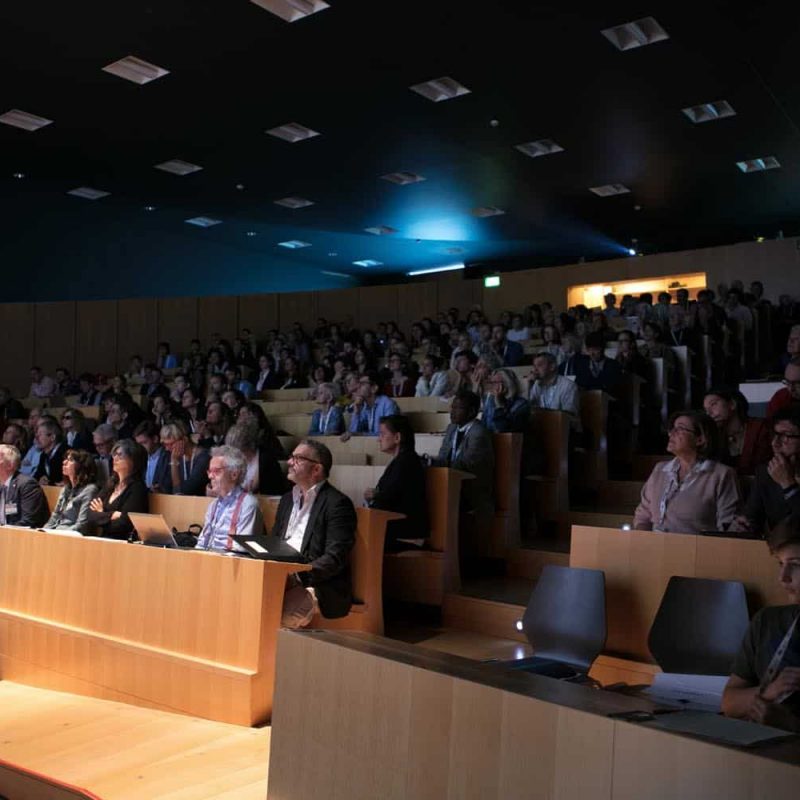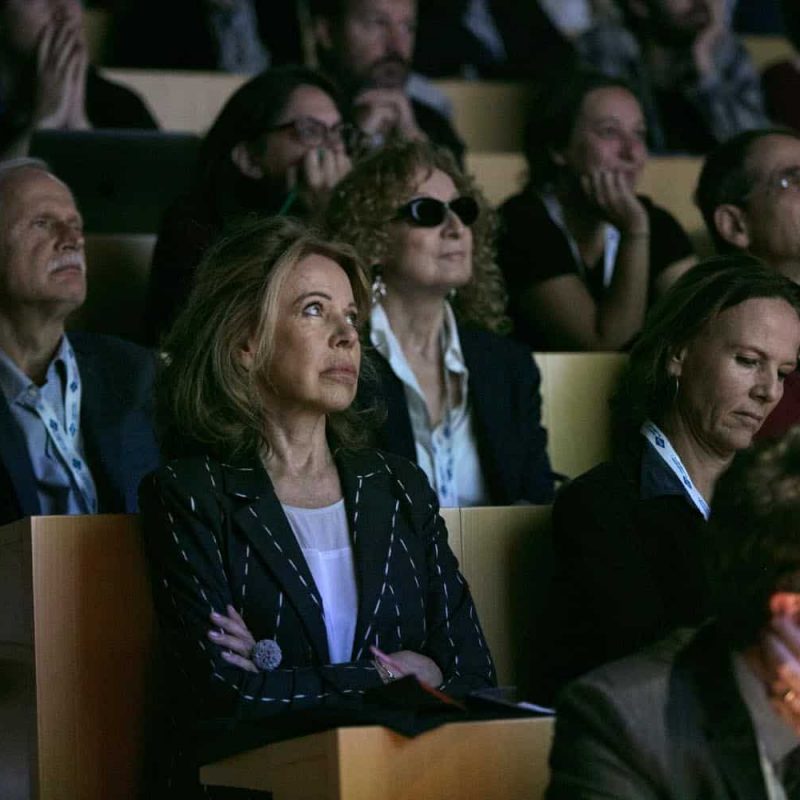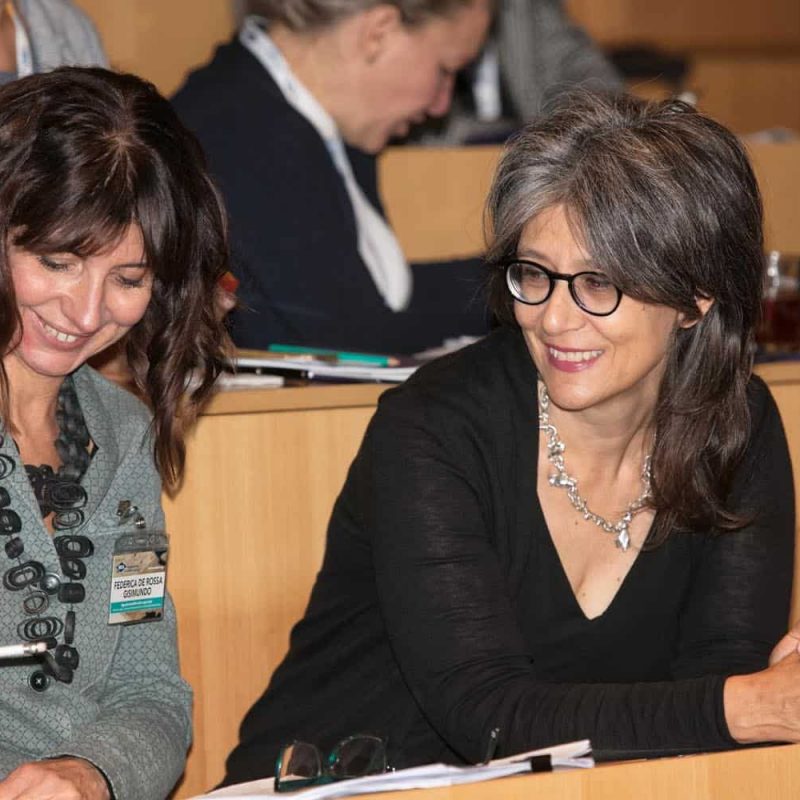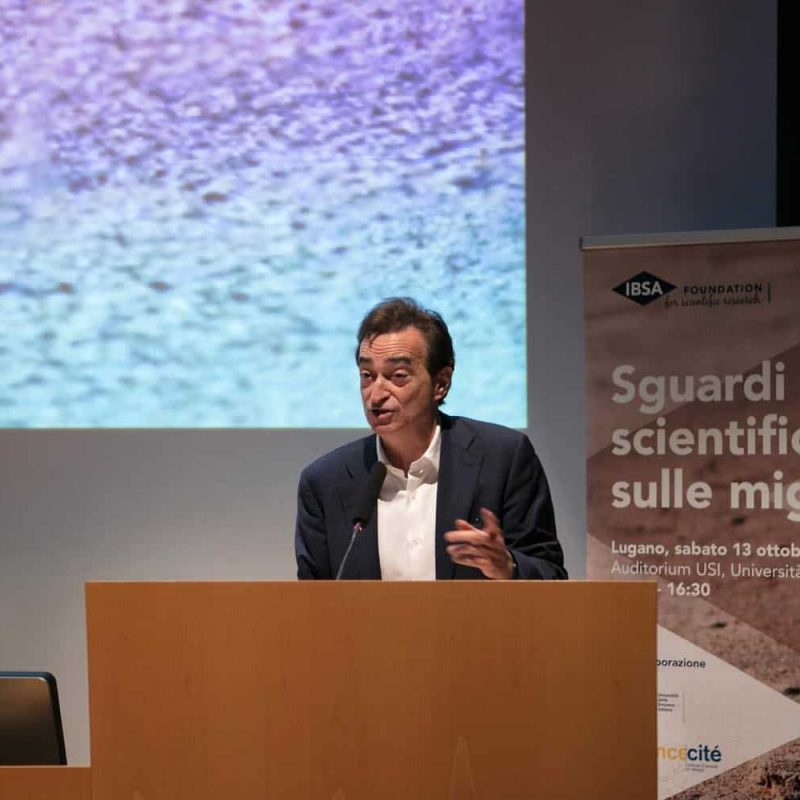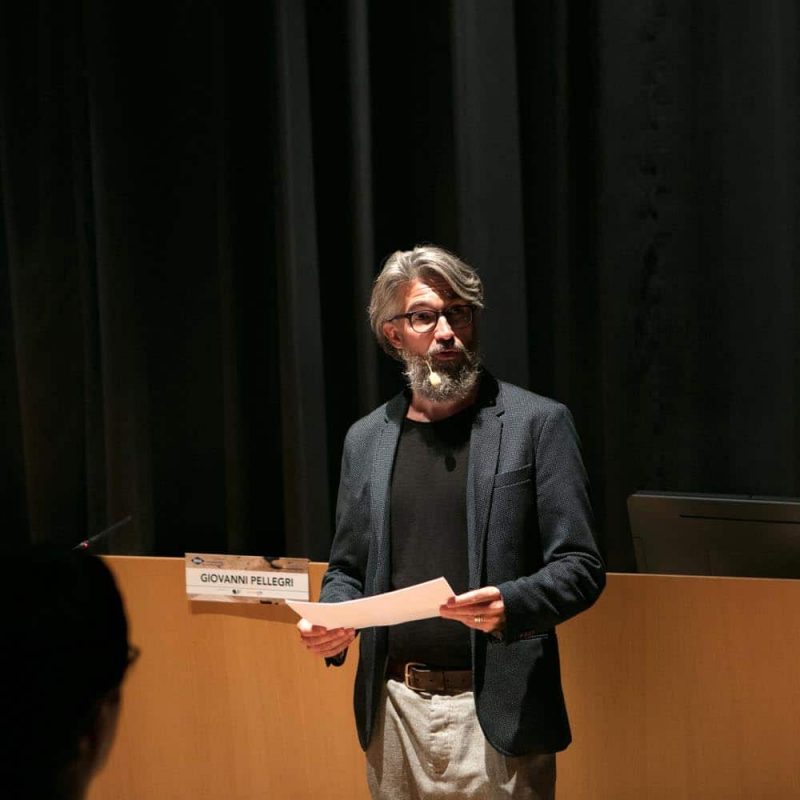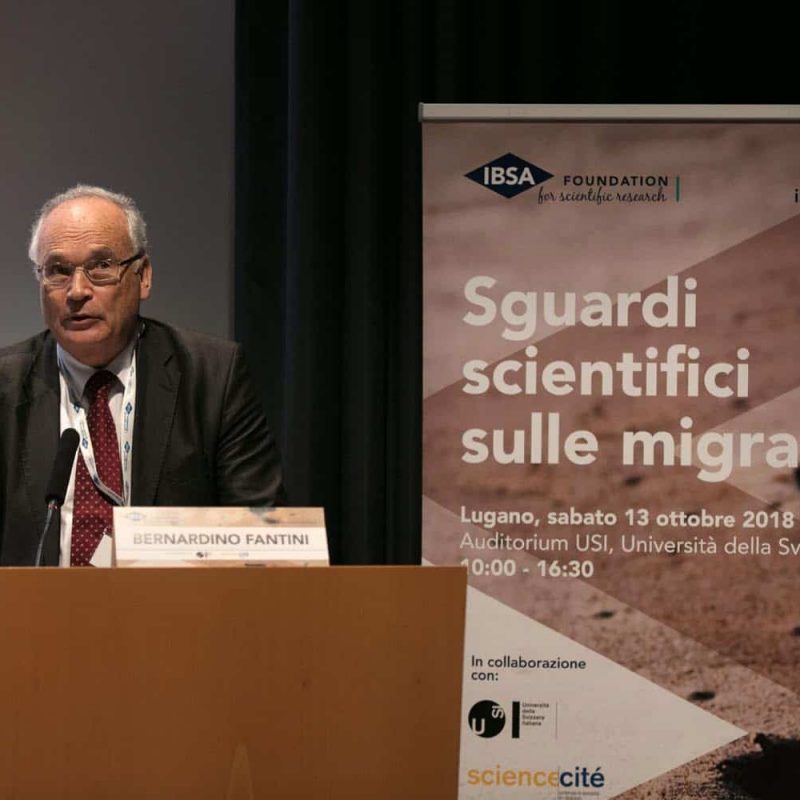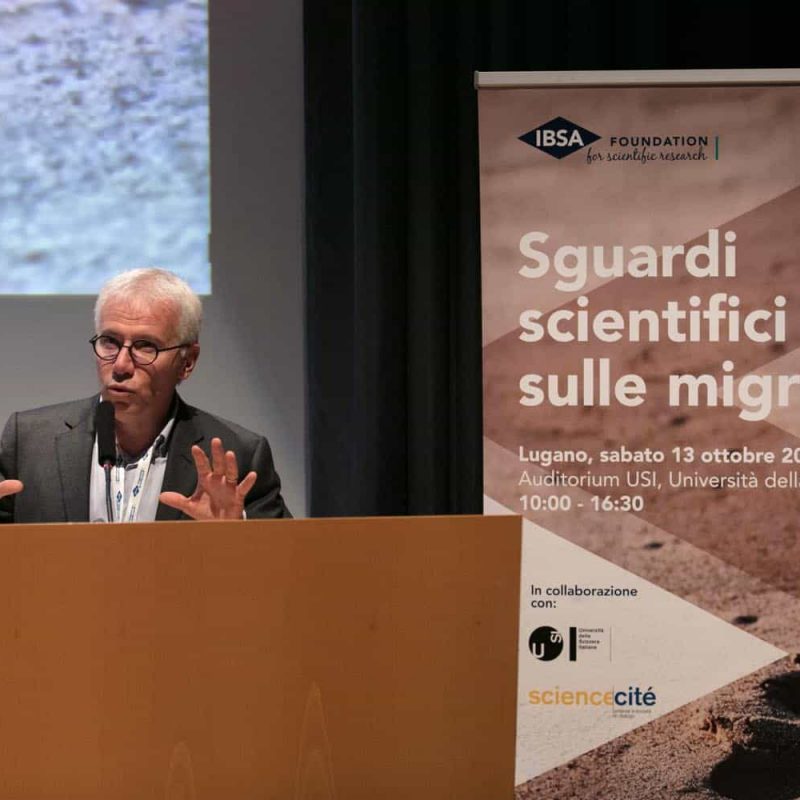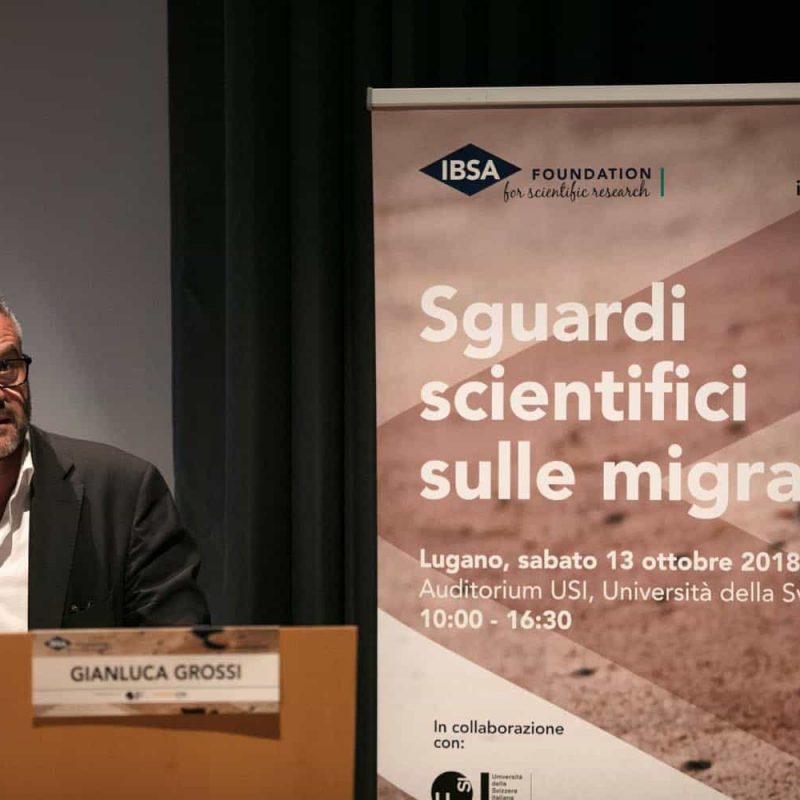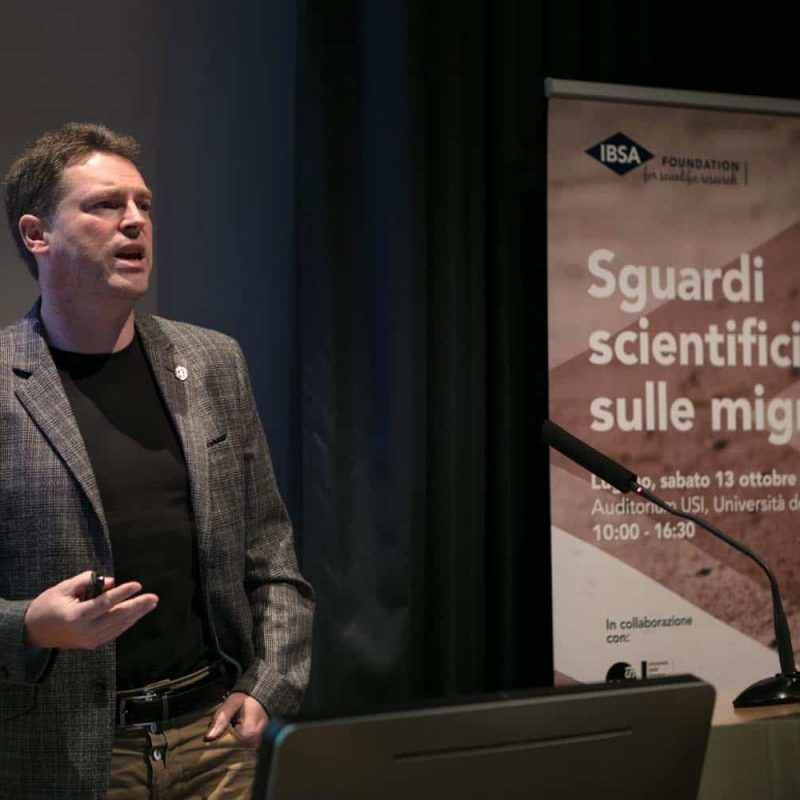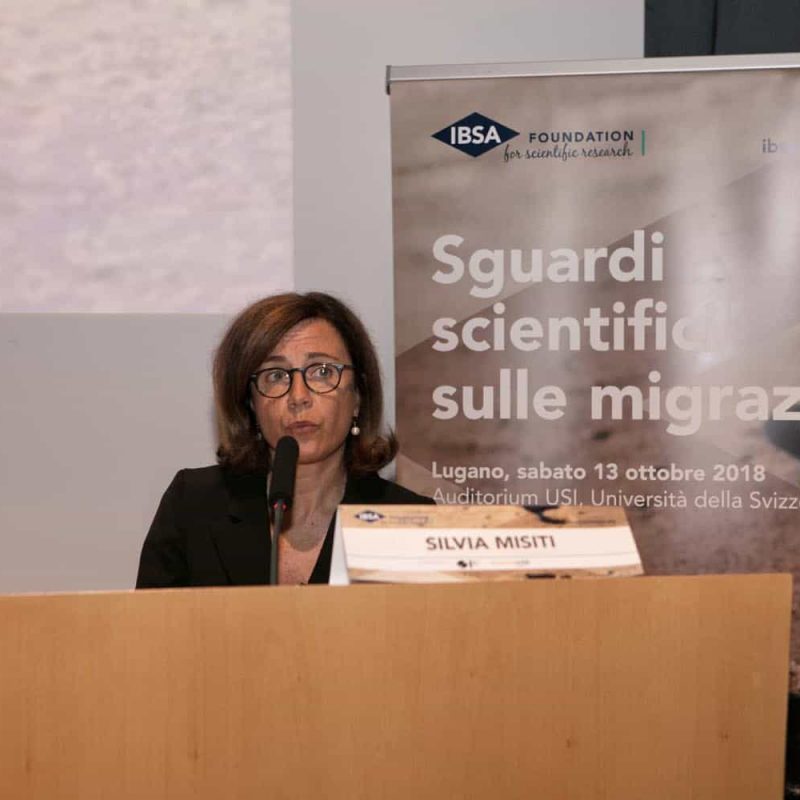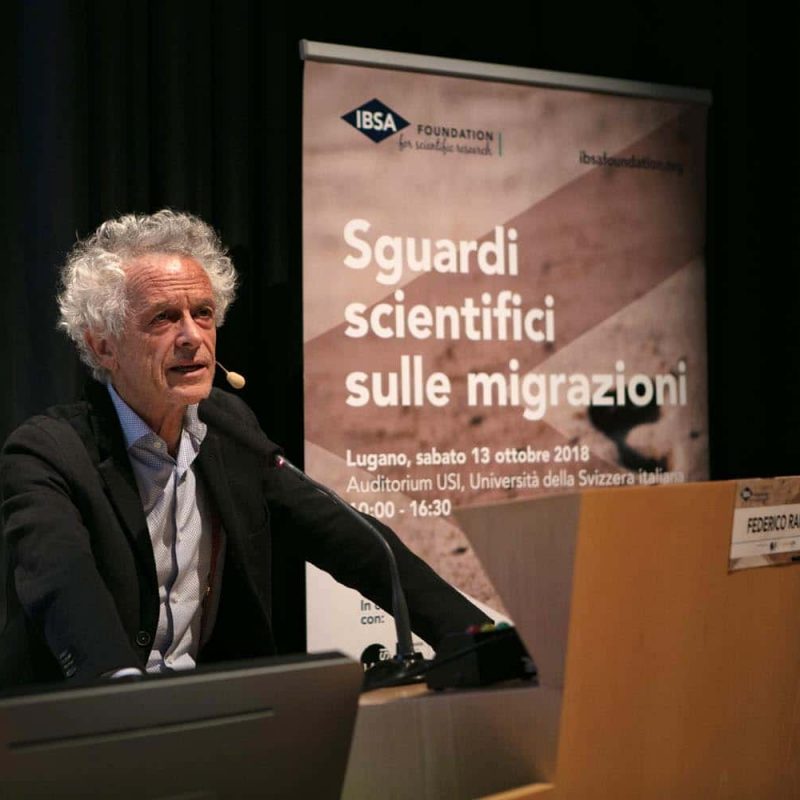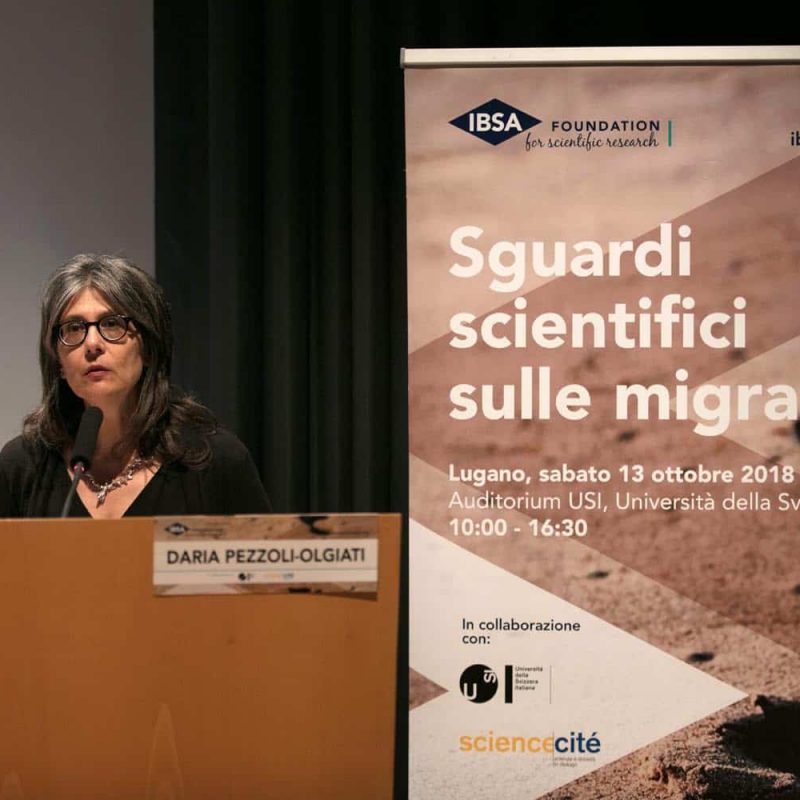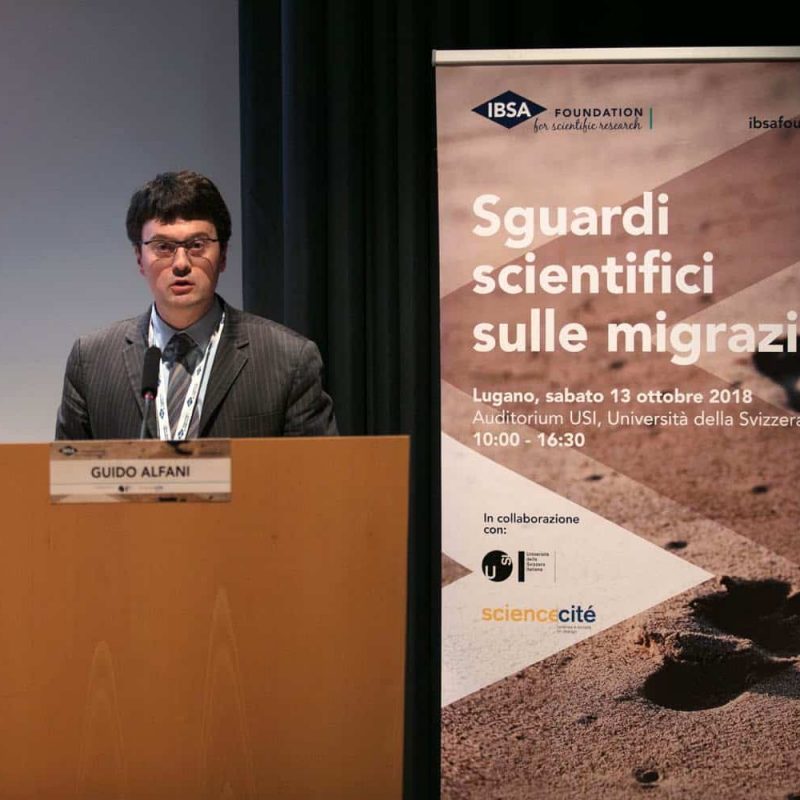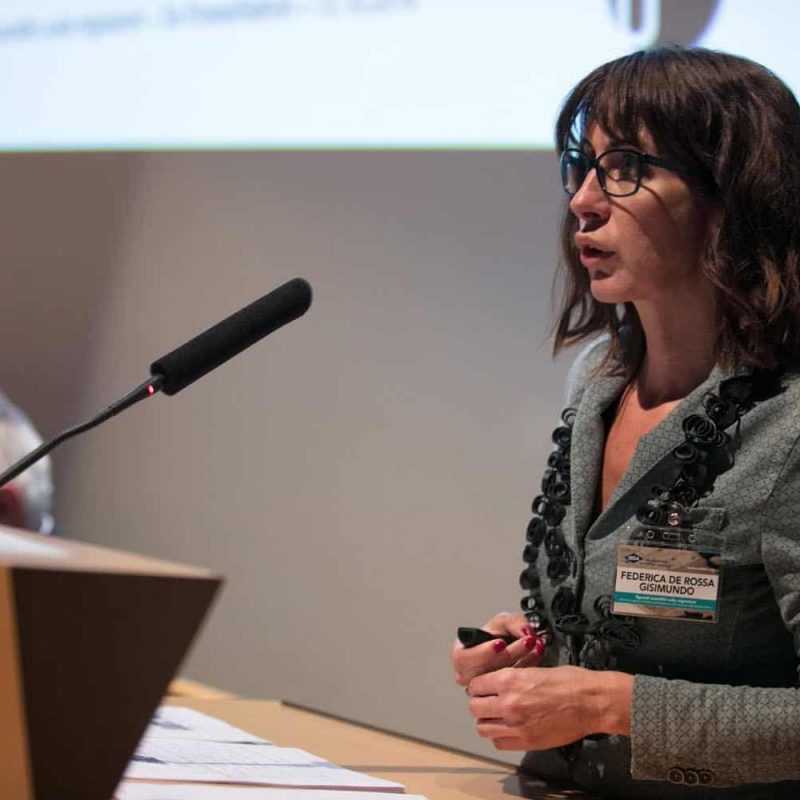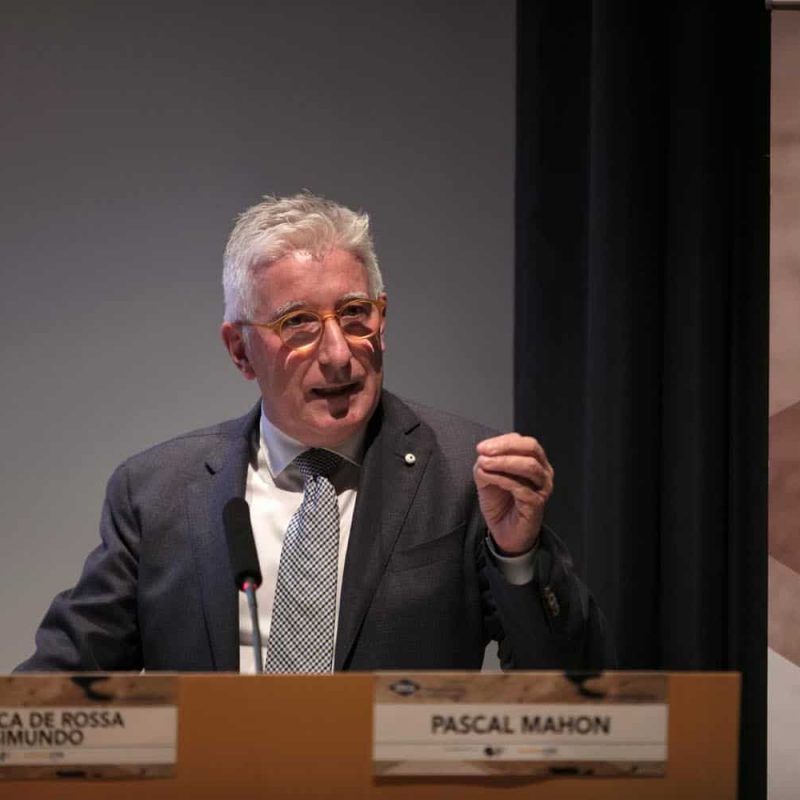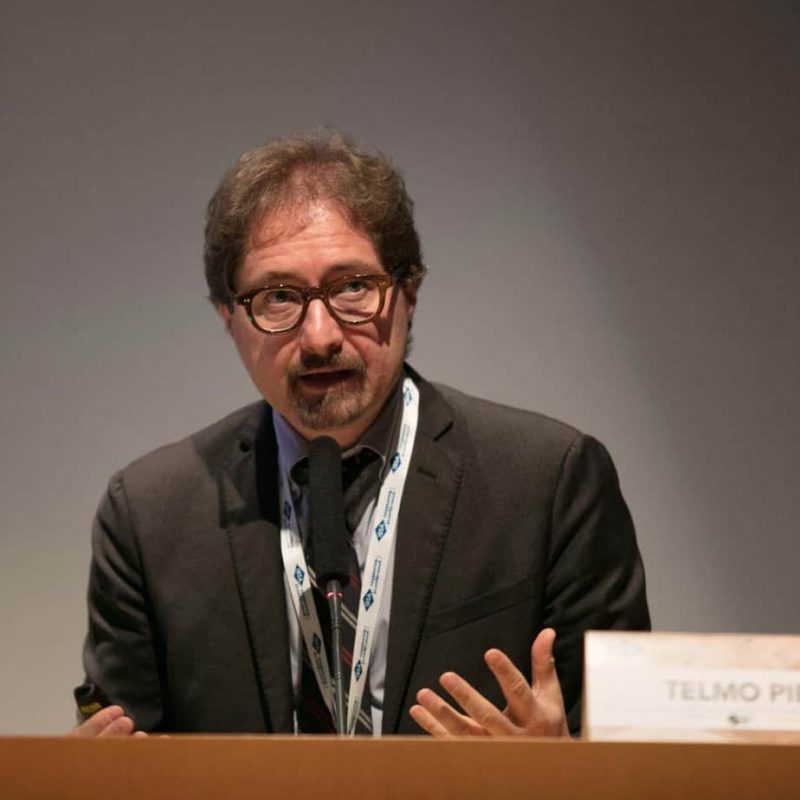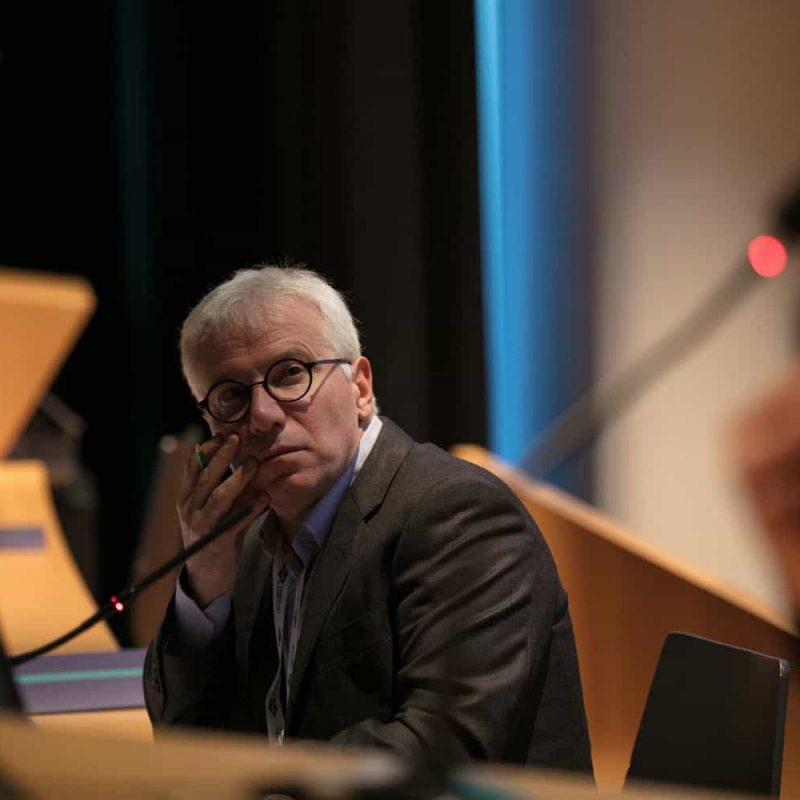The phenomenon of migration: the search for an objective and documented point of view.
The topic of migration requires a complex interpretation that brings into play different fields of knowledge, from history to anthropology, from palaeontology to law. And this indeed was the case at the Forum “Scientific views on migration”, organized by IBSA Foundation in collaboration with Giovanni Pellegri, Head of L’ideatorio of the Università della Svizzera italiana, and Telmo Pievani, Professor of Philosophy of Biological Sciences at the University of Padova.
For a moment the latest headlines were left aside to adopt a more wider-ranging perspective. With the help of the nine speakers specializing in different fields, an attempt was made to move away from the dramatic image of a boat overflowing with people and to set it within a debate that would raise questions about issues such as frontiers and boundaries, identity, multi-culturalism, citizenship and solidarity.
The debate did not focus on international agreements and EU policies, but rather on the considerations that all citizens ought to make in the face of the evidence that us humans have always been migrants. Physical movement is, in fact, an age-old human adaptation, a reaction to environmental change, as well as climate change in particular (ultimately, this is also what is happening today): for the past two million years human populations have left their native continent, Africa, and migrated in all directions, differentiating themselves.
The Forum, without dwelling on sentimentality, but also not becoming inured to the drama of millions of people, attempted to reflect on the subject of migration, aware of the fact that it is not only related to scientific, political and historical ideas, but first and foremost the more complex and contradictory themes of humankind: the apparent safety of our life and its evident vulnerability, the acceptance and refusal of diversity, selfishness and solidarity, the reassuring nature of the familiar and the openness to the unknown, “us” and “others”, the dignity and contempt of humans, the powerlessness of our actions and the change that each and every one of us can bring about.
All this in the awareness that these themes have always marked the evolution of the human species and its cultures and will continue to be the focus of our lives also in the future.
Location
Auditorium USI, Lugano – Switzerland
Date
October 13, 2018
Press Review
click here to download the PDF
Speakers
- Giovanni Pellegri, L’ideatorio, Università della Svizzera italiana, Lugano, Switzerland
- Telmo Pievani, Università di Padova, Italy
- Bernardino Fantini, University of Geneva, Switzerland
- Gianluca Grossi, Photographer, Bellinzona, Switzerland
- Mark Maslin, University College, London, UK
- Anja Klug, UNHCR Office for Switzerland and Liechtenstein, Switzerland
- Federico Rampini, Journalist, writer, news correspondent of “La Repubblica” from New York
- Daria Pezzoli Olgiati, Ludwig-Maximilians- Universität, Munich, Germany
- Guido Alfani, Bocconi University, Milan, Italy
- Federica De Rossa Gisimundo, Università della Svizzera italiana, Lugano, Switzerland
- Pascal Mahon, University of Neuchâtel, Switzerland
- Igor Horvat, theater actor working between Switzerland and Italy
Forum’s Scientific Committee
- Telmo Pievani, Università di Padova, Italy
- Giovanni Pellegri, L’ideatorio – Università della Svizzera italiana, Lugano, Switzerland
- Silvia Misiti, IBSA Foundation for scientific research, Lugano, Switzerland
Video
Video Interviews
UNDERSTANDING WHO WE ARE IN ORDER TO LOOK TOWARDS THE FUTURE
Giovanni Pellegri, Head of L’ideatorio, Università della Svizzera italiana, Lugano, Switzerland – Moderator and member of the Forum’s Scientific Committee
Often when we think of migration today we think of invasions, we think of fear, of a gut feeling. Despite the perception of a crisis without precedent, for Europe this is not a new situation. In the last century we witnessed even more serious damage on several occasions: like the 7 million refugees of the First World War, or the 60 million after the Second, not to forget the Vietnam refugee crisis or that of the Armenian population.
The interesting, pedagogical aspect, of the view of migration today is that, first of all, we ourselves, with our humanity, are called into question: who we are, what relationship we have between acceptance and refusal, between solidarity and non-solidarity, between ancestral fear and an intellect of acceptance. We can learn a lot from migration, because it is not a recent phenomenon, but rather an event that has marked the history of humankind. In order to look towards the future we need to first of all understand who we are.
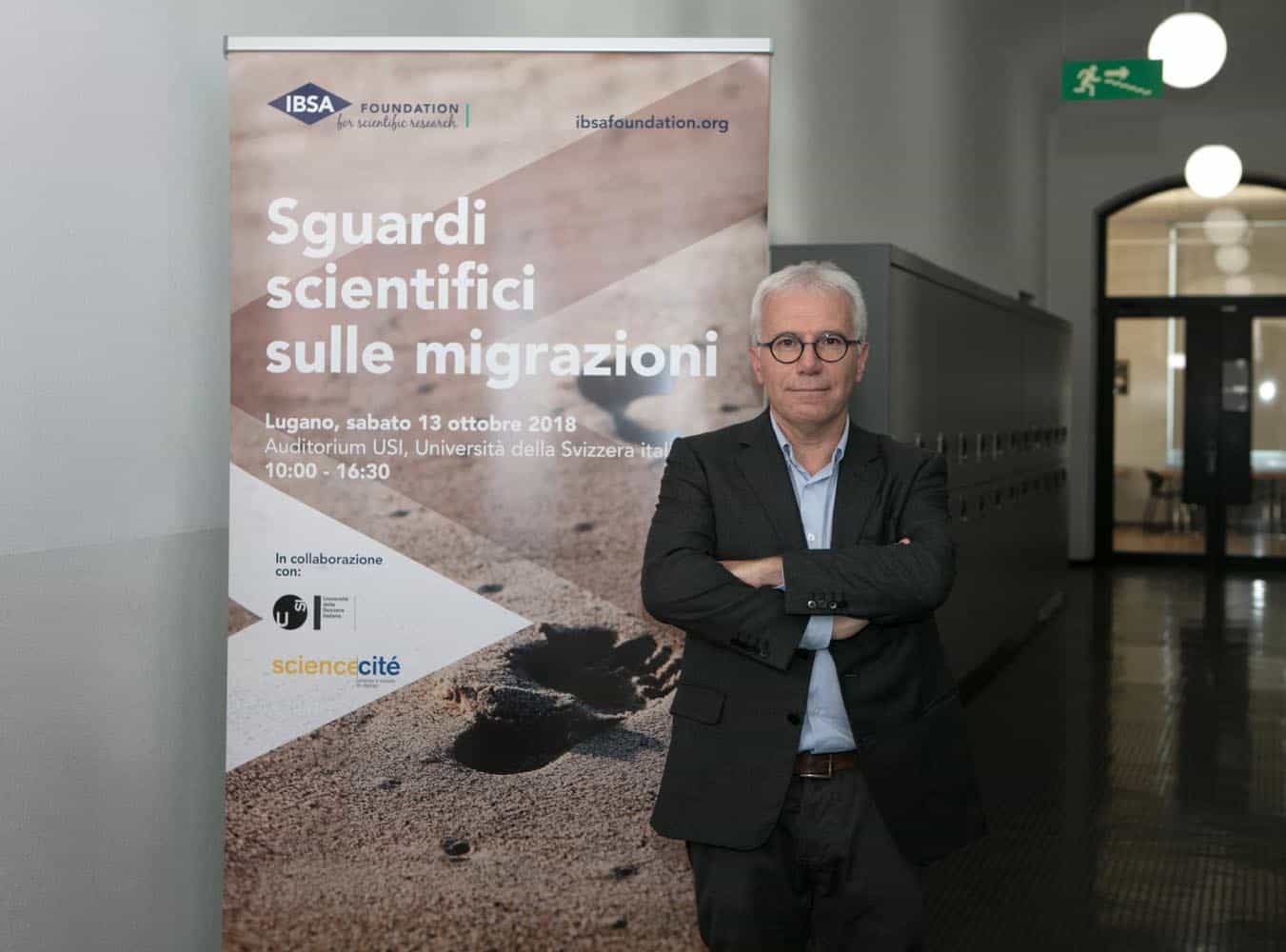
TWO MILLION YEARS OF MIGRATIONS
Telmo Pievani, Full Professor of Philosophy of Biological Sciences – Università di Padova, Italy – Moderator and member of the Forum’s Scientific Committee
News reports illustrate the phenomenon of migration as though it were a recent emergency. In reality, human beings have been migrating for the past two million years: first outward from the African continent, at various intervals; then across Africa and Eurasia; finally, to Australia and the Americas. We have never stopped and the Mediterranean has always been the epicentre of this adaptive human behaviour. The main cause of human migrations has been climate change. This is also the case today: according to UN estimates, by the year 2025 (in seven years’ time) roughly 50 million people will be forced to move non-locally (i.e. across at least one State boundary) owing to the desertification brought about by intensive agriculture and climate change (caused, this time, by the human species itself). is is especially true for Africa, the original starting point of human migrations – to say nothing of the wars and acts of discrimination of today.
So there is nothing new here – and certainly nothing surprising on the scientific level. But if so many people will no longer have the right to remain in their native land, while at the same time being unable to migrate, we are bound to witness an exacerbation of the kind of tensions and conflicts that destabilize, bring fear, and keep peace at bay. And if this comes about, we can hardly claim that we were caught unaware.
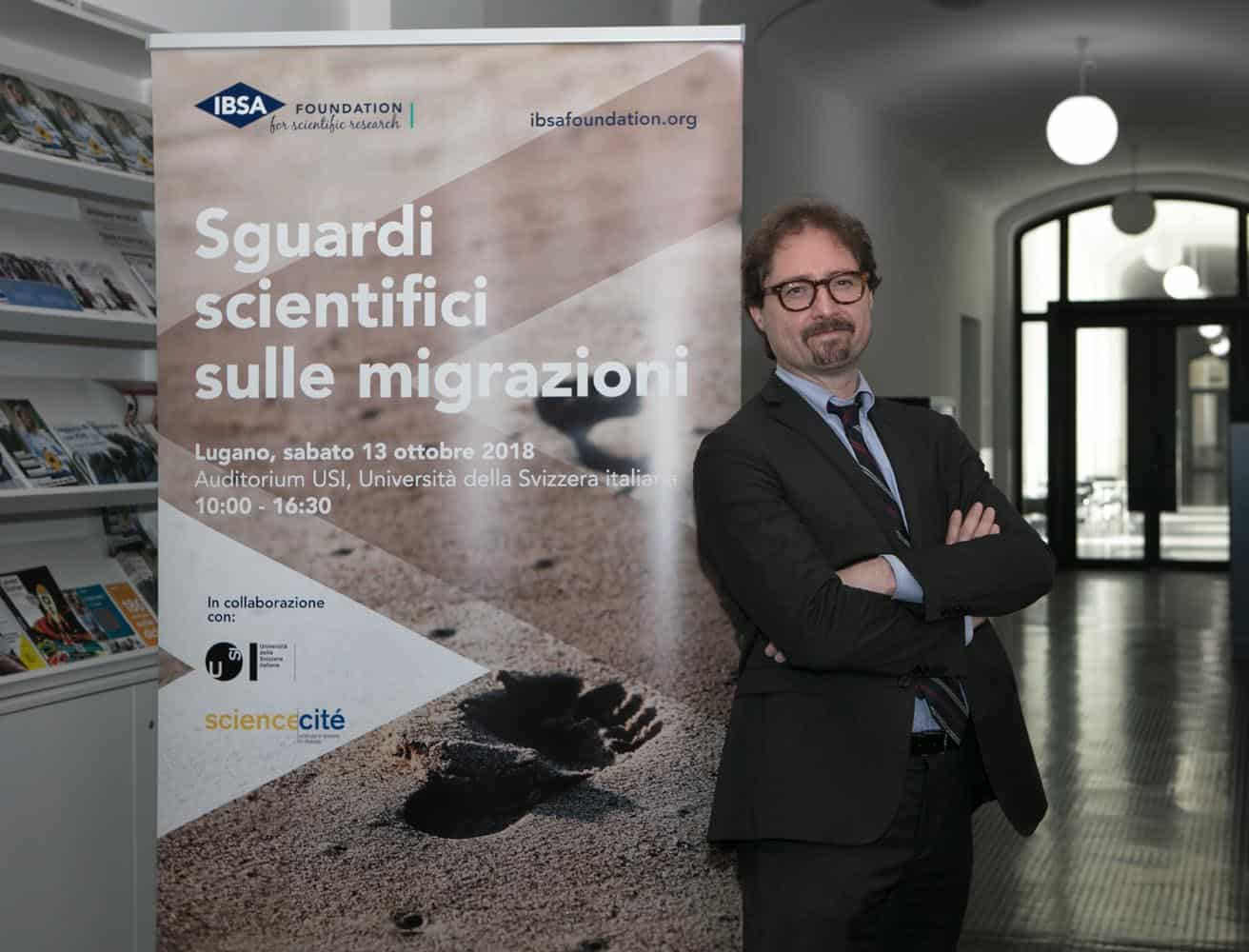
MIGRATIONS AND EPIDEMICS: BETWEEN HISTORY AND THE LATEST HEADLINES
Bernardino Fantini, Emeritus Professor of History of Medicine and Health, University of Geneva, Switzerland
The relation between migrations and epidemics is a recurrent feature in the history of mankind. Many of the major epidemics that shaped history and human outlooks in the past were associated with large-scale population movements, caused by migrations, wars, and geographical discoveries: the arrival of malaria in Europe, that of the plague in the late Middle Ages, the smallpox epidemics in America in Columbus’ wake, the arrival of syphilis in Europe, the outbreaks of yellow fever in the late 18th century, the tragic cholera and typhoid epidemics of the 19th century and, in the early 20th century, the terrible pandemic of Spanish flu at the end of World War I.
In recent decades, however, two factors have deeply altered, and in a way overturned, the historical connection between migrations and epidemics: globalization, which has exponentially increased the scale and speed of population movements, and the development of biomedicine, which has provided some powerful means for the control and prevention of epidemic phenomena.
Despite the dangers associated with emerging diseases, such as Ebola and Zika, the flow of people and goods through mass tourism and international trade currently entails far greater risks in terms of the spread of epidemics compared to migrations due to war or poverty.
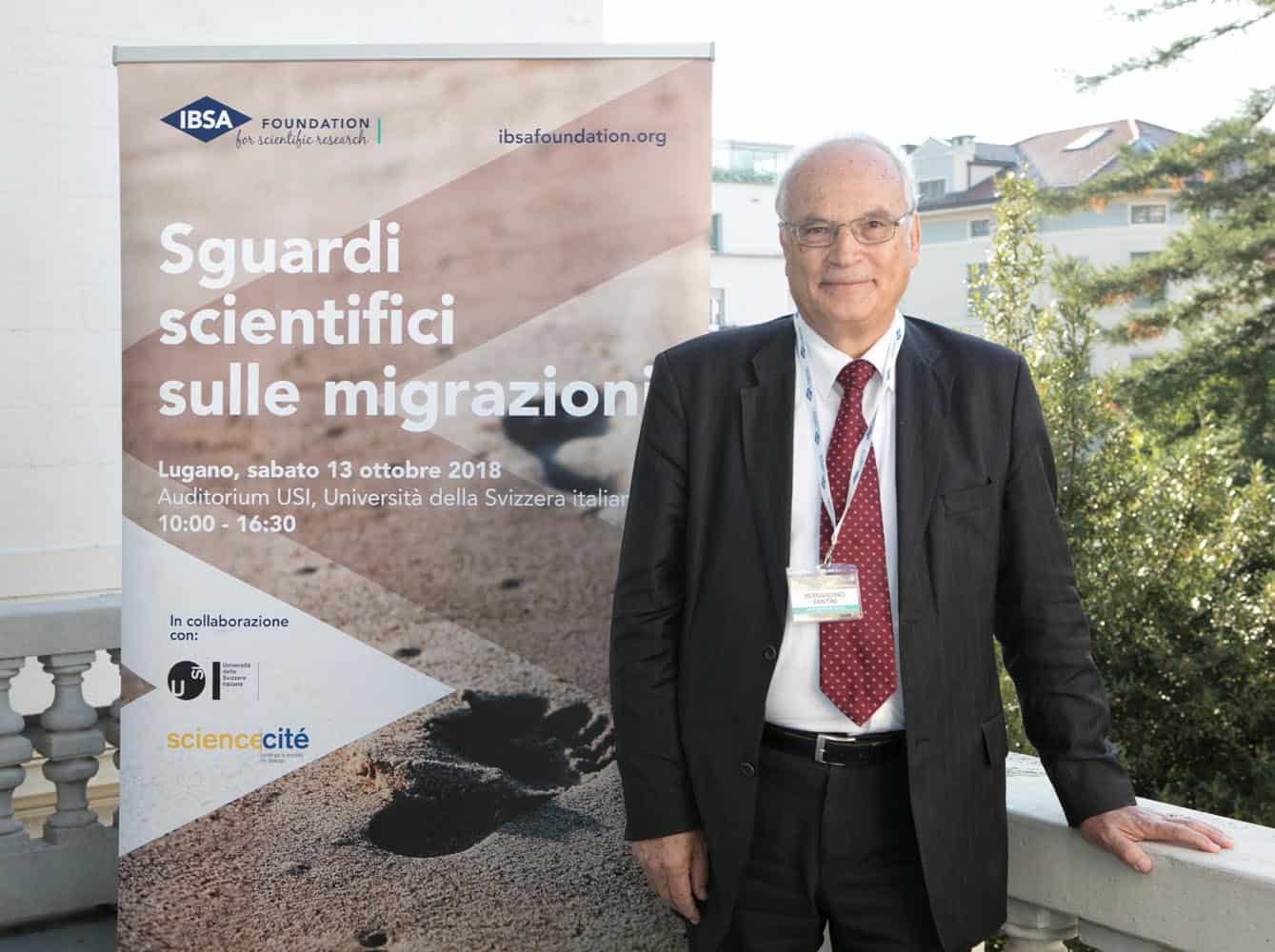
A REPORTER’S BUSINESS. WAR AND MIGRATIONS AS EXPERIENCED ON THE FIELD
Gianluca Grossi, Photographer, Bellinzona, Switzerland
We stubbornly report on war in the belief that it might be of some use. We report on what war does to human beings and what human beings are capable of committing in a war, in the belief that this might help us understand the phenomenon and ourselves. We report on the flight from conflicts – in the hope that this might help define the overlaps between the lives of those who are forced to flee and of those who are not. We report on conflicts so as to set them within a narrative capable of evoking the tumultuous, synchronic unfolding of reality.
I ask myself what the purpose of this work is – the reporter’s work – and conclude that it serves no purpose, that we serve no purpose – if not documenting the inevitable repetitiveness of what we are capable of doing to one another: i.e. of updating the archives of History. In words and images I will be presenting the reflections (and confessions), doubts and few certainties of a “field reporter”, by engaging with an unfolding reality and, within it, with the stories of the thousands of people I have met.
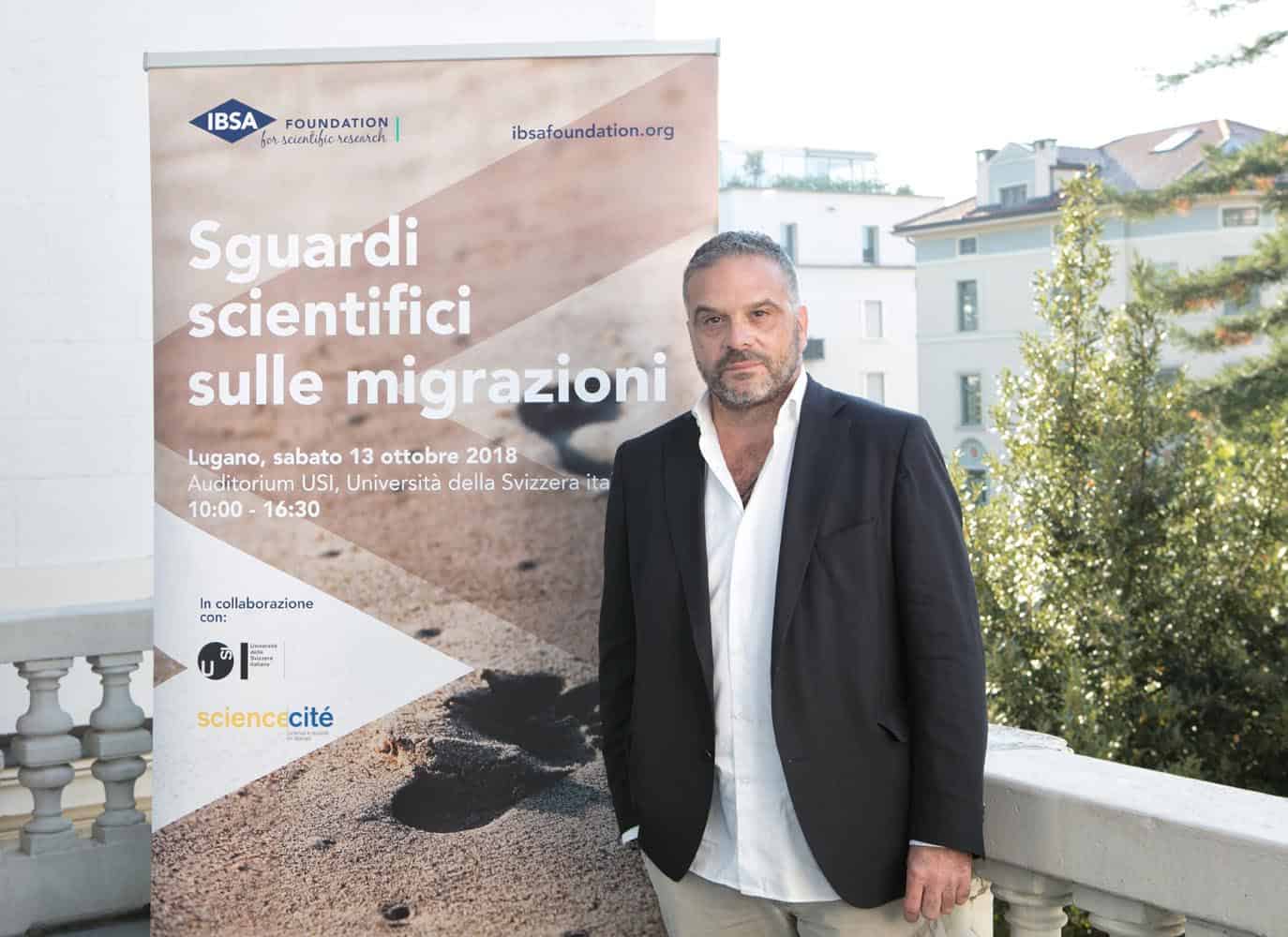
MIGRATIONS AND CLIMATE
Mark Maslin, Professor of Climatology, Department of Geography, University College London, London, UK
The total number of displaced people fleeing conflict worldwide in 2016 reached an all-time high of 65.6 million. The majority were fleeing the on-going conflicts in Syria, Afghanistan and Somalia.
Specific episodes of conflict have even been labelled as “climate-driven conflicts”, with the former UN Secretary General Ban Ki-moon in 2007 describing the on-going war in Darfur as one of the “first climate wars”.
The simplistic assumption suggests a mono-causal narrative wherein conflict is driven solely by climatic change. This political stance pre-empts academic research that concludes that there is no consensus whether or not climate change is a significant driver of conflict and/or migration.
Our work on East African conflict and displacement challenges this simple narrative of climate change causation. Using detailed records for the last 50 years we suggest that rapid population growth, low or falling economic growth and political instability during the post-colonial transition were the more important controls. We argue that good stable governance may prevent climate change leading to greater conflict or displacement of people.
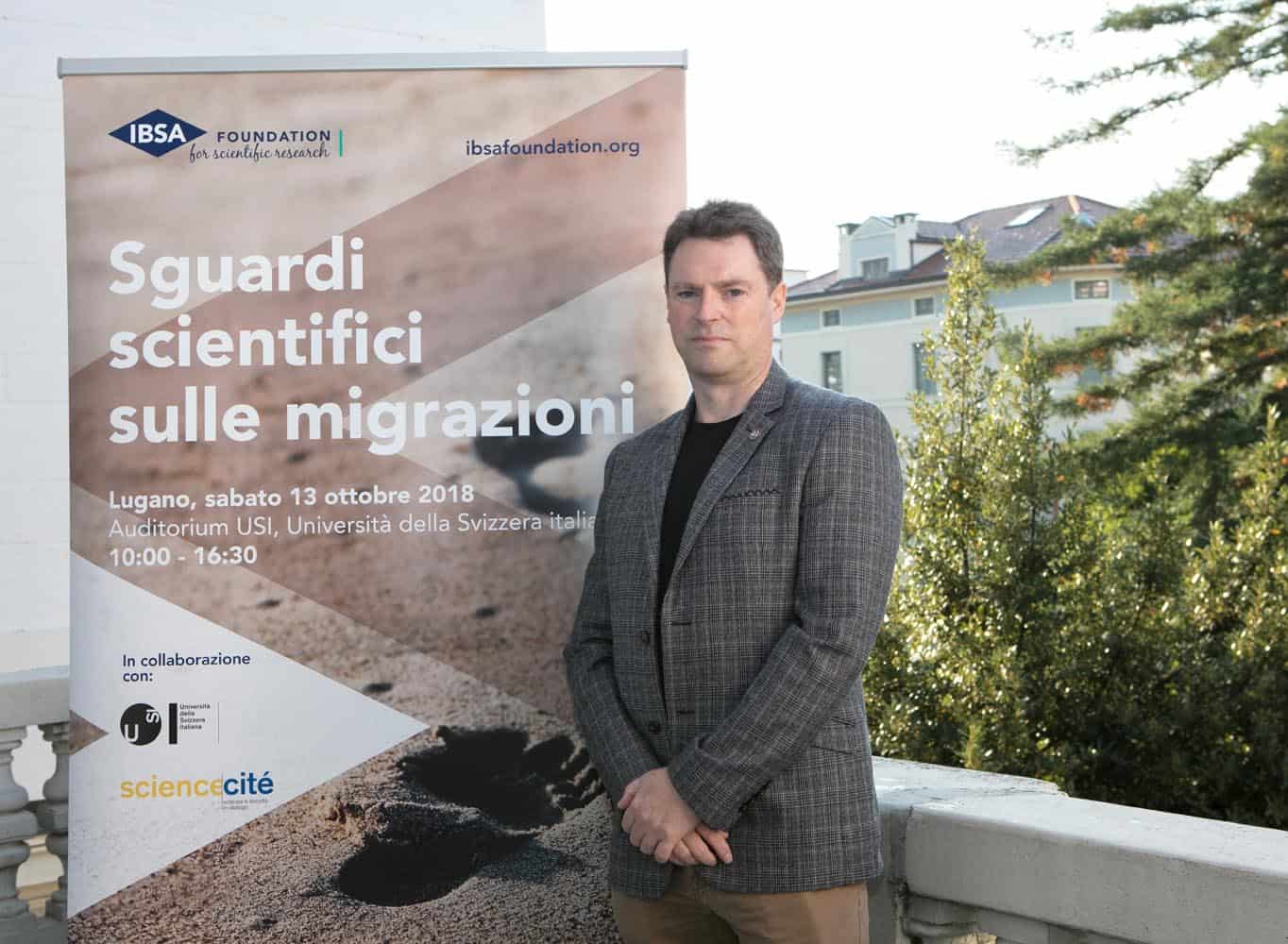
FORCED DISPLACEMENT: FACT AND FIGURES
Anja Klug, Head of the UNHCR Office for Switzerland and Liechtenstein, Switzerland
The global population of forcibly displaced people has been constantly increasing during the past decade. It reached a new height in 2017 as a result of deteriorating situations in several countries as well as continued conflict in other areas of significant displacement. In my presentation I will analyse the latest figures in more detail by providing an overview of global displacement trends, including internal as well as cross border displacement. The presentation will exemplarily analyse the displacement caused by the Syria conflict, its impact on countries in the region and in Europe. Furthermore, I will briefly discuss the mixed movement across the Central Mediterranean Sea route to Europe and the adequacy of responses taken by the European Union and its Member States.
The presentation will end with a brief analysis of the recently adopted Global Compact on Refugees and its potential for an advancement of the current international protection regime.
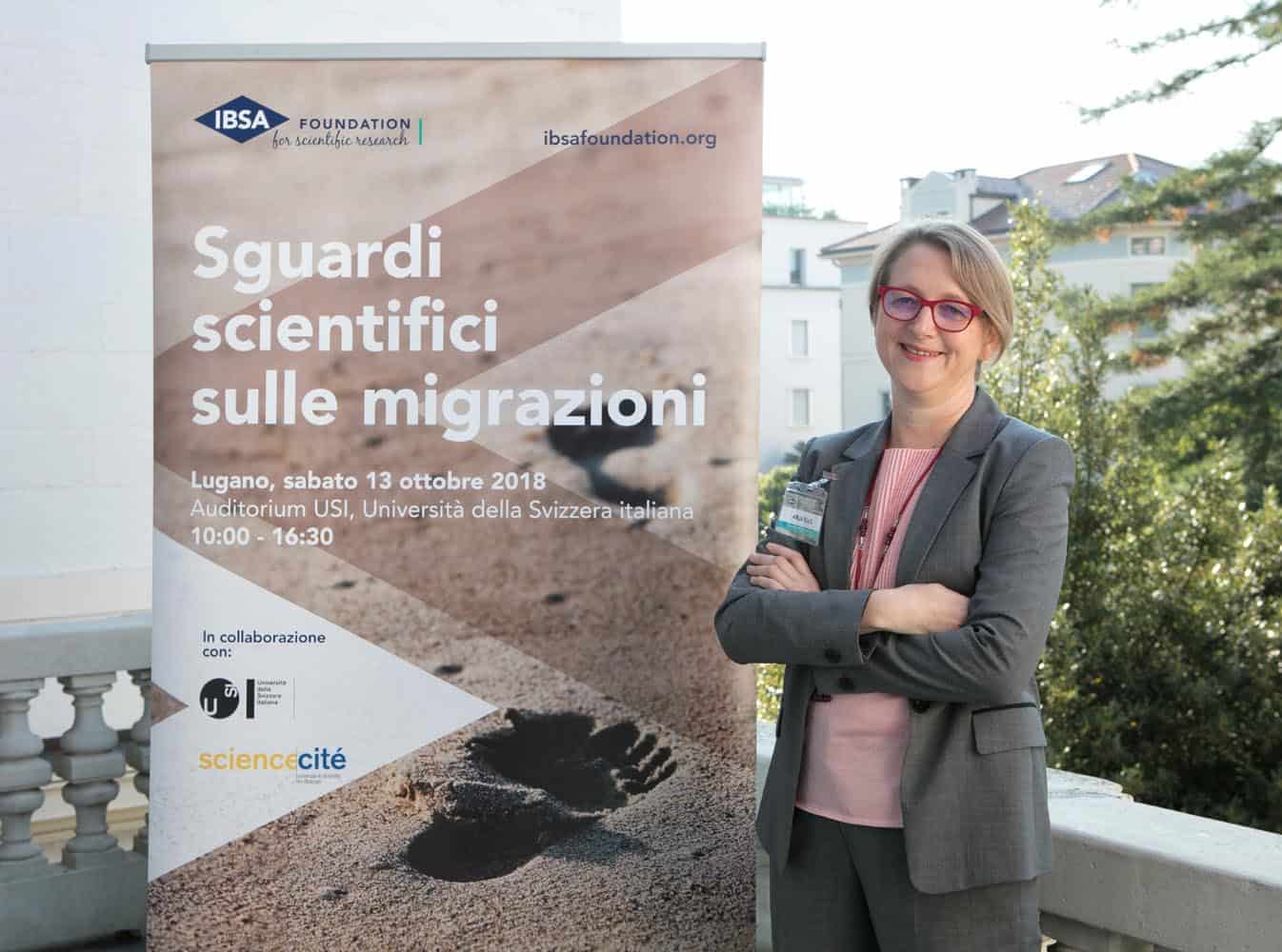
WHAT DOES THE IRISH QUESTION OF MID-800 TELL US
Federico Rampini, Journalist, writer, news correspondent of La Repubblica from New York
The famine was so terrible that it reduced the country’s population by a quarter. This did not happen in Sub-Saharan Africa, nor was it caused by civil war or ethnic genocide. The Great Hunger, as it was called, ravaged Ireland from 1845 onwards. The final toll of the famine was horrific: between 1845 and 1849, one million Irish died and another million looked to emigration as a way out. In many parts of the Anglo-Saxon world Irish immigration produced success stories, with Irish people occupying influential top positions such as the Kennedys, the automobile manufacturer Henry Ford, the film director John Ford, the animated cartoon wizard Walt Disney.
Then we must carefully consider the reading of the prophet of communism, Karl Marx. The opinions expressed by Marx concerning the “Irish question” are exemplary: he did not disparage immigrants, but explained that their arrival was damaging for English workers.
It should be noted that there is a difference between a country’s wealth measured by its GDP, and the economic well-being of individual citizens measured by their respective incomes. If the population grows – for example, due to an influx of foreigners – its national wealth grows. But this in no way means that its individual citizens are better off. In fact, a country can enjoy overall growth, while some individual categories are impoverished.
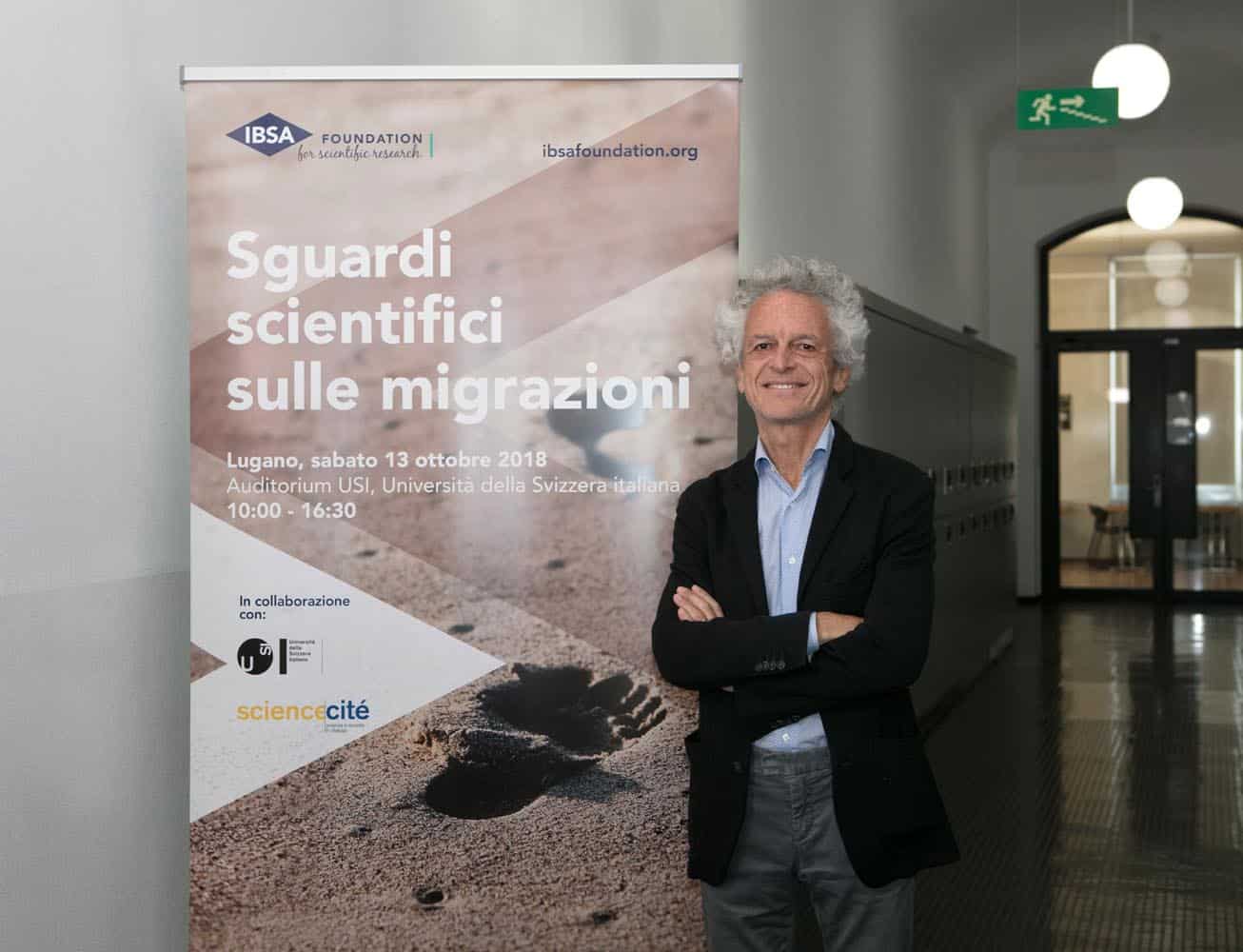
IMAGES IN MOVEMENT: AUDIOVISUAL DOCUMENTS ON MIGRATIO
Daria Pezzoli Olgiati, Professor of Religious Studies, Ludwig-Maximilians- Universität, Munich, Germany
The phenomenon of migration which we are witnessing is documented by many stereotyped images circulating through newspapers, TV programmes, the Internet, and social media. Setting out from a cultural studies approach, alternative points of view will be suggested that will raise questions in the audience’s mind. By considering different audiovisual formats, a comparison will be drawn between different perspectives: that of the people fleeing and that of the people taking them in, perspectives which aim to create a distance and ones that elicit empathy. The talk will highlight the various representation strategies and discuss the interpretative processes stemming from them.
The underlying thesis is that images not only document a reality but shape and mark it, conveying certain values and ideologies, either implicitly or explicitly. In this interdisciplinary research field, hermeneutical, anthropological and ethical aspects are intertwined, creating an intricate maze of outlooks and policies.
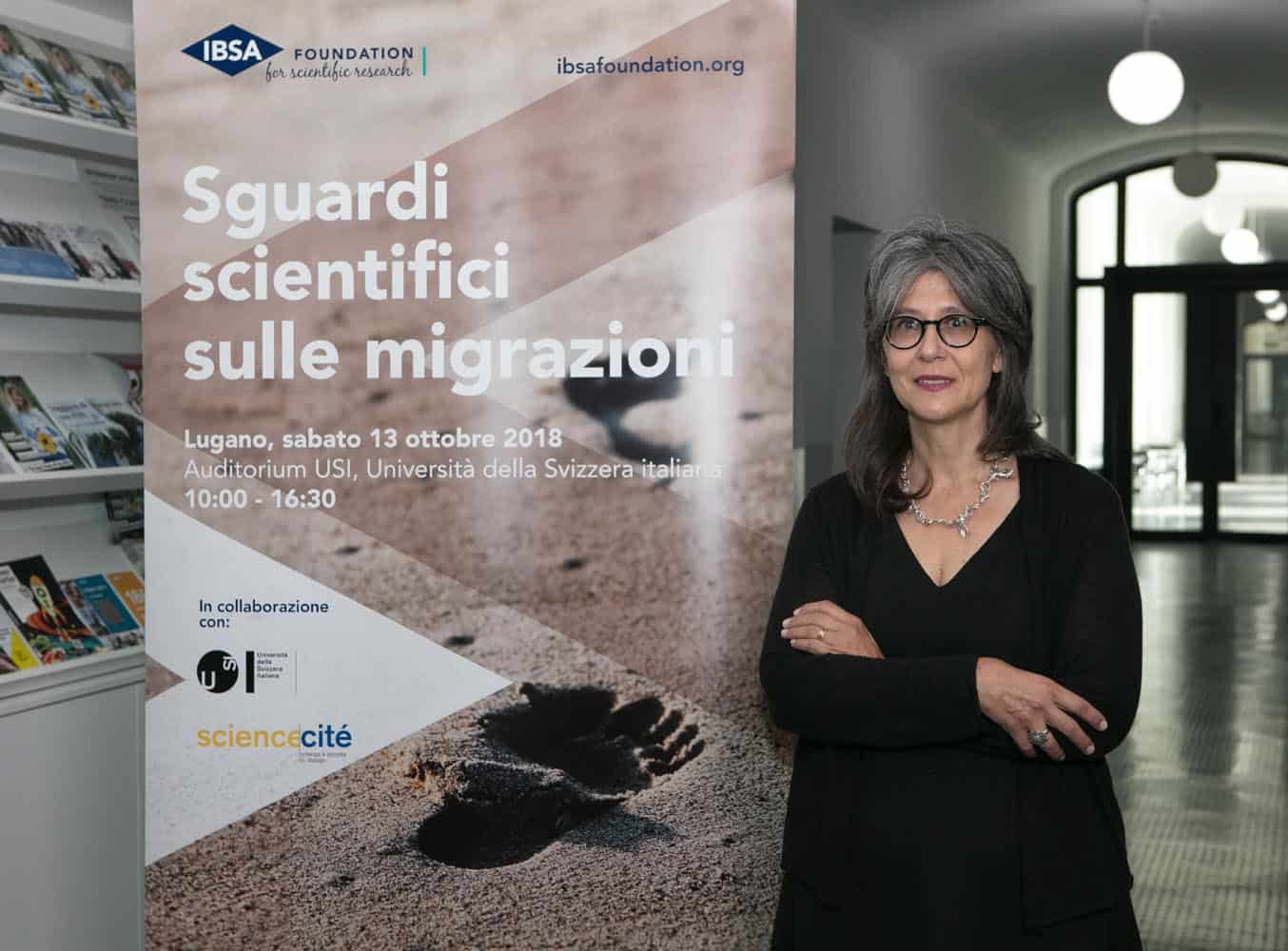
MIGRATIONS AND DEMOGRAPHY: A HISTORICAL PERSPECTIVE
Guido Alfani, Professor of Economic History, Bocconi University, Milan, Italy
Migrations are a recurrent feature in the history of mankind; however, specific historical phases are marked by particularly intense processes of movement and mixing of human populations.
Although international migrations are a very complex phenomenon, and although the causal factors at work are always different, it is clear that demographic variables play an especially important role: most frequently, these are of the so-called “push” type, as in the case of the demographic transition of the 19th century, which brought about vast migrations from Europe; at times, however, “pull” variables are also at work, as in the aftermath of the discovery of the Americas. In this context, the opportunities offered by the New World and the demographic catastrophe that affected native populations encouraged a consistent and prolonged flux of incoming people, which was partly forced (to wit, the importance of African slaves in the colonies).
Historical experience provides a useful key to interpret contemporary migration flows, insofar as these are at least partly determined by differences in demographic growth across different areas of the world and by the perception of a radical difference in terms of perspectives and conditions of life.
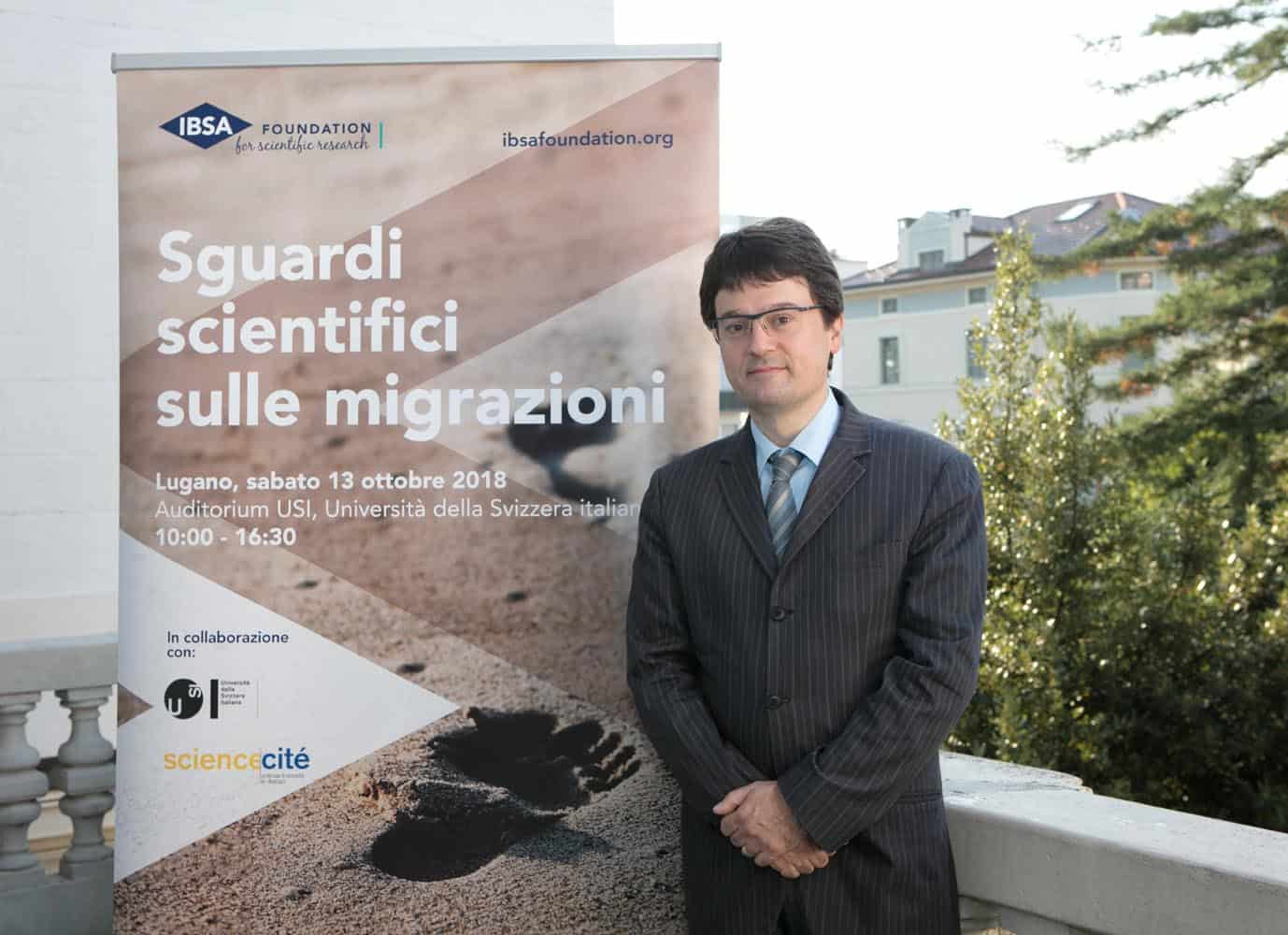
MIGRATIONS, RIGHTS AND DEMOCRACY
Federica De Rossa Gisimundo, Assistant Professor of Economic Law, Università della Svizzera italiana, Lugano, Switzerland
We cannot say that a right to migration exists, but there is migration law where it is crucial that the fundamental rights of citizens are guaranteed. Migration law is essentially made up of tools that restrict the freedom of migrants (bans on entering countries, obligations to collaborate in view of their own deportation), but also a wide number of freedoms (the freedom to exercise an economic activity when admitted to the country, the right to receive social benefits). Therefore, migration law does not only mean the regulation of migration, but also the provision of guarantees. By tracing the main stages that have marked the evolution of Swiss migration law, I asked myself where its regulation originated, if it has always responded to the same principles and if the factor of direct democracy has always played a role. What emerged was a policy that swings between institutional impulses and democratic initiatives, social needs and economic contingencies emerged, essentially based on the notion of integration.
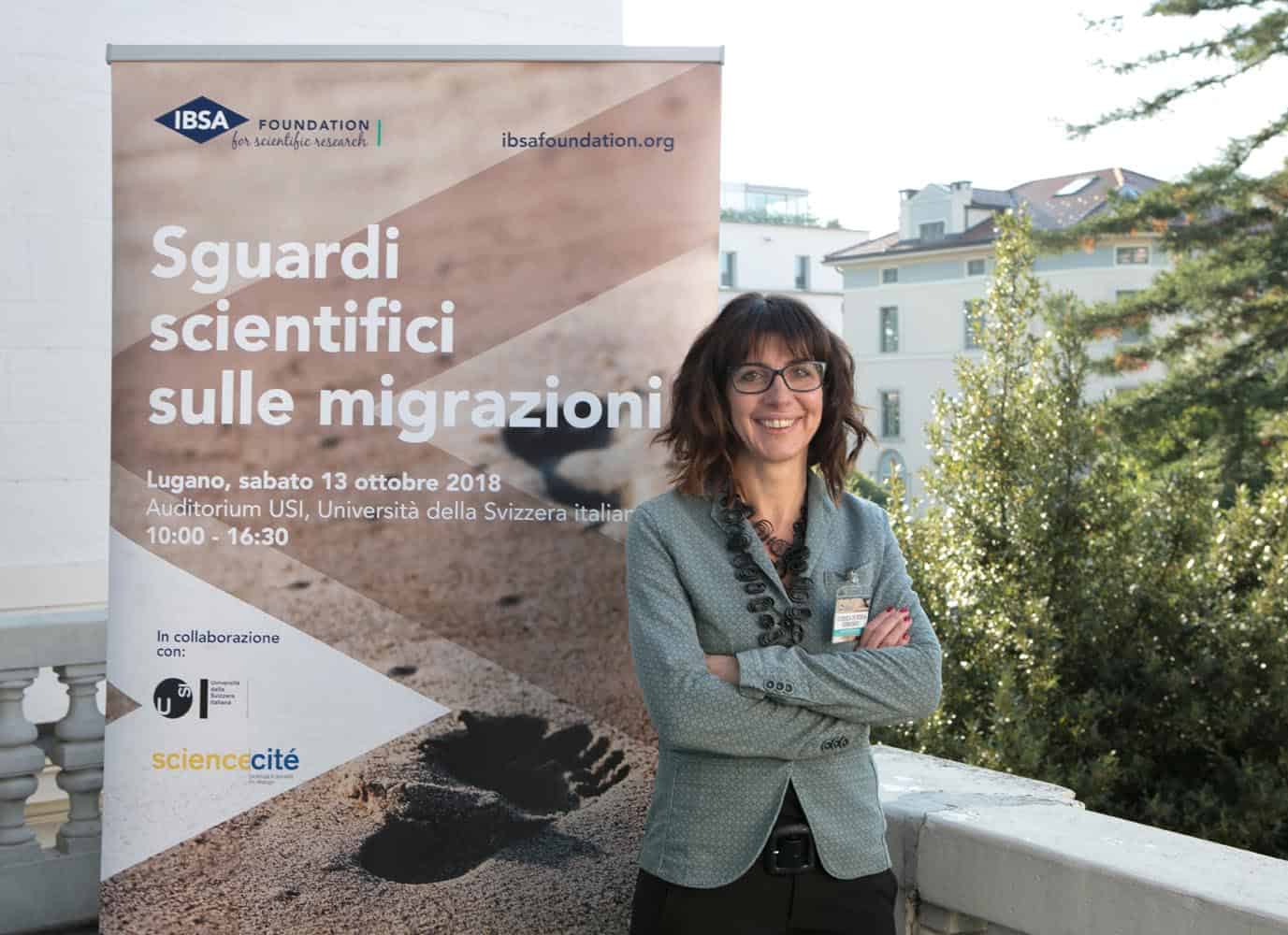
THE CONCEPT OF INTEGRATION: A NEW PARADIGM
Pascal Mahon, Professor of Swiss and Comparative Constitutional Law, University of Neuchâtel, Switzerland
The concept of integration has become the key concept of Swiss law on foreign nationals and Swiss citizenship law. Its interpretation has greatly changed over the years: at the beginning of the twentieth century one talked of incorporation, of awarding citizenship to all foreigners born in Switzerland. This path, which was very generous, was subsequently abandoned and next came a rather different concept, where integration was the first rung on the ladder that led to naturalization and citizenship. And then the paradigm was somewhat overturned: first a person had to be integrated and then they could have access to citizenship.
Switzerland opted to divide the right to migration into three different sectors (naturalization, foreign nationals and asylum), based on a policy of integration, where integration was an essential condition for inclusion in the host society. The concept of integration has also been reinforced, because today we speak of “successful integration”. But what does integration mean?
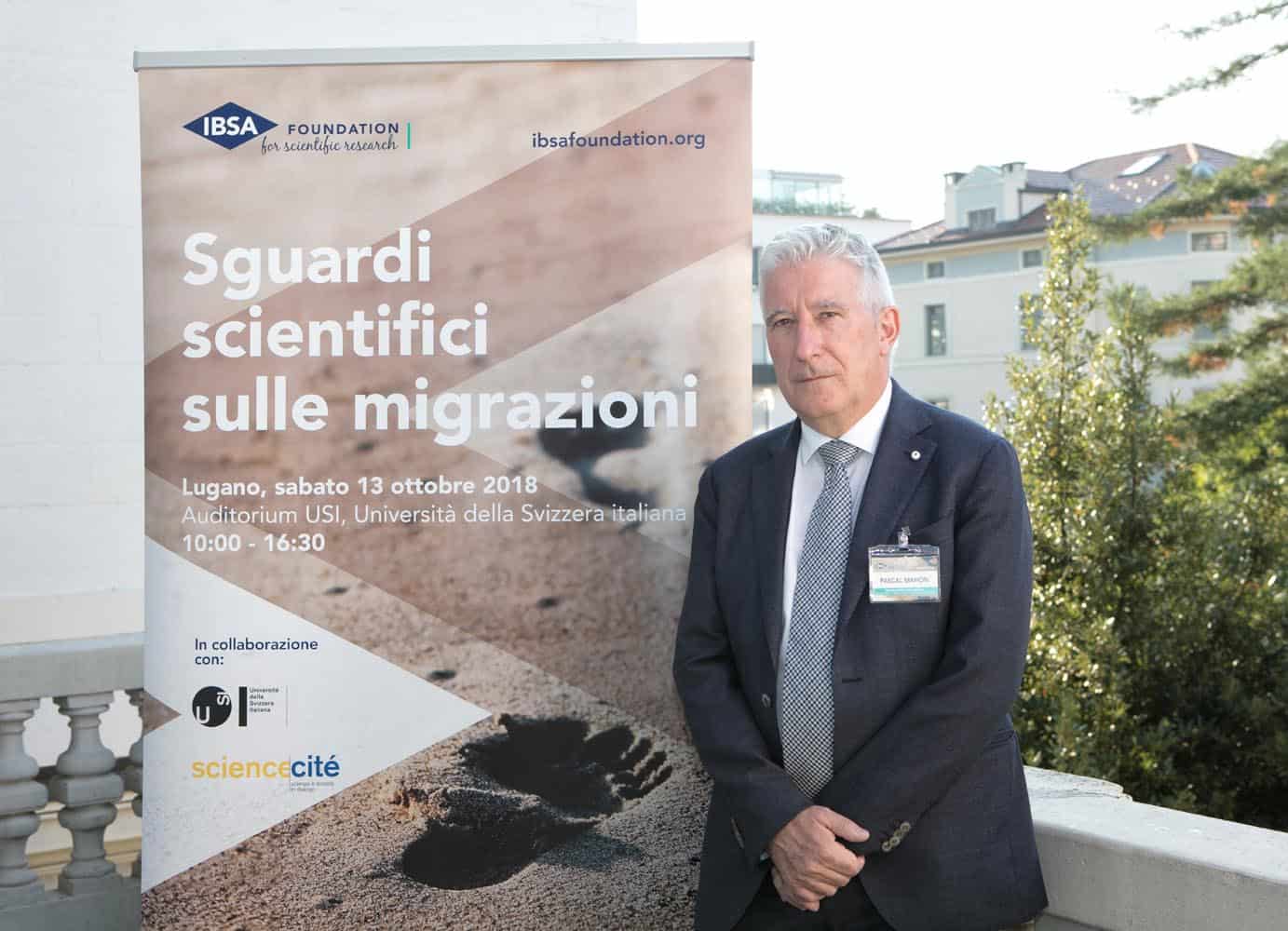
MIGRATION AND STEREOTYPES
Igor Horvat, theater actor working between Switzerland and Italy
Literature has always told the story of humankind, and therefore has also spoken of migration, exodus, and stories of estrangement and discovery. They are stories that affect us deeply, that move us, that question us: it is without doubt that they help us to understand ourselves better. The risk that stereotypes can be fed through these stories is a risk run by literature, rather than a risk that we all run, as readers. Stereotypes are something that we carry inside us, a cumbersome heritage that we have to face and that we also have to make peace with, probably.
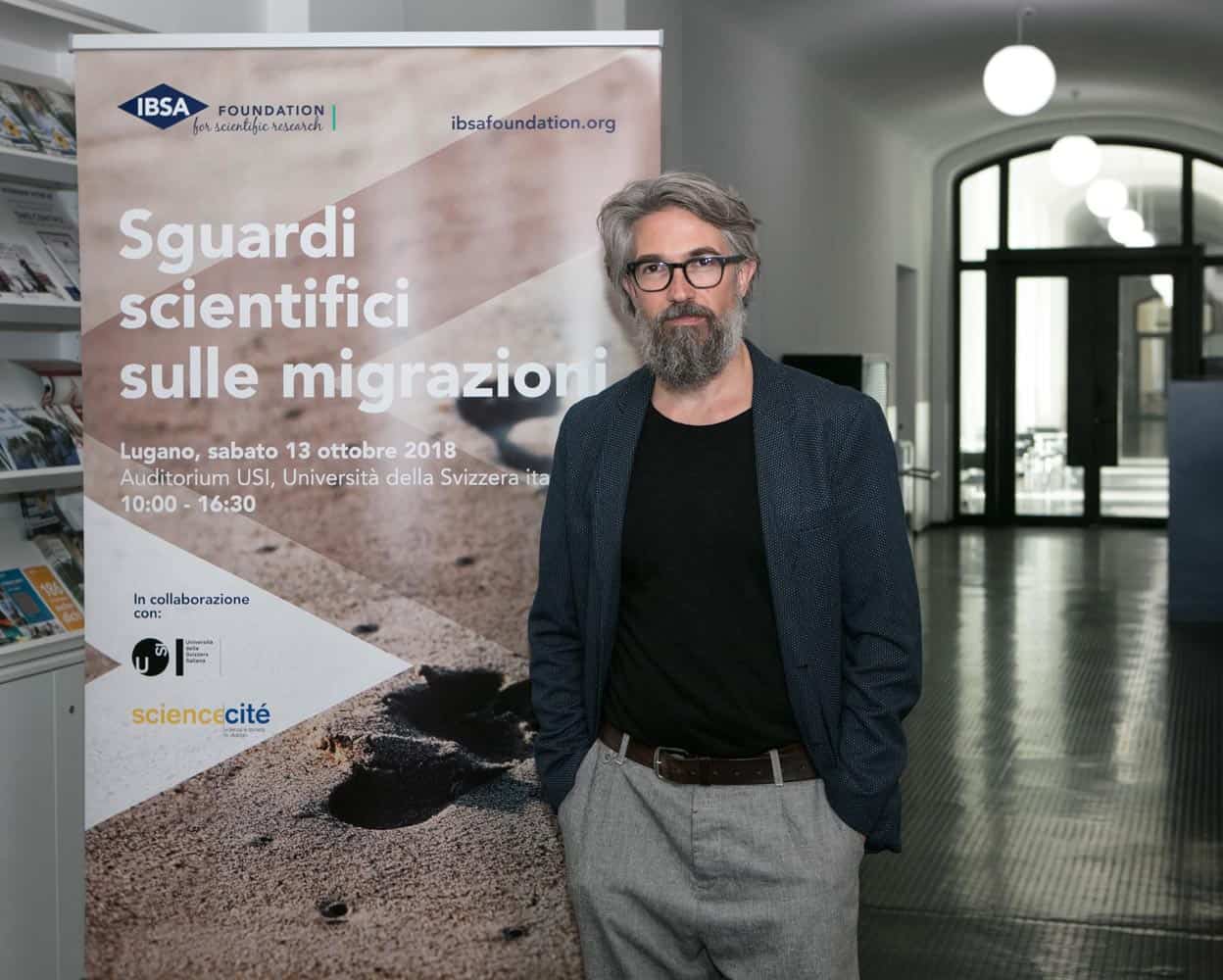
Photos


